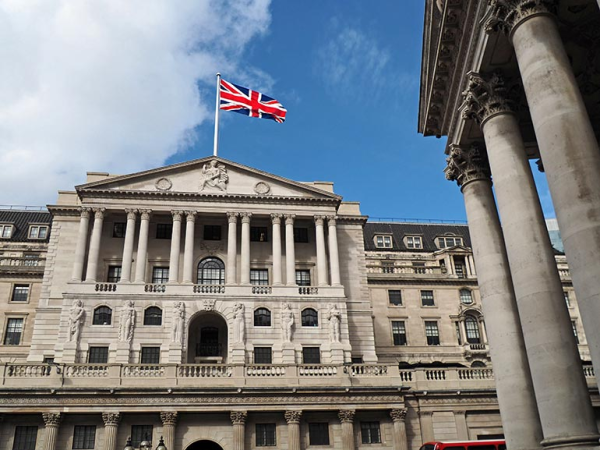UK CPI Reshapes BoE Speculation
The GBP/USD forex pair traded near a multi-month low of nearly 1.2400 on Tuesday, April 16, following disappointing unemployment data for the 3-month period from Dec 2023 to Feb 2024. However, losses were contained, supported by higher-than-expected UK wages.
Although Tuesday's data was seen as reinforcing expectations that the Bank of England (BoE) would cut rates in the coming months, the British Pound reversed losses early Wednesday, April 17, after the UK's inflation data slowed less than expected in March. The CPI report sent the Pound higher against the Dollar as some investors interpreted the numbers as reducing chances of an immediate UK rate cut.

UK Jobs Disappointment Contained by CPI
UK unemployment surged to a six-month high of 4.2% in the three months to February, signalling a cooling labour market in the UK. The rate came in above expectations of 4% and from 3.9% prior. In fact, job vacancies fell for 21 straight months but remained above pre-COVID levels, suggesting limited upward pressure on unemployment. Interestingly, the inactivity rate hit its highest since mid-2015 at 22.2%, showing more people dropping out of the workforce, reducing potential growth and adding to inflation pressures.
Conversely, average earnings increased by 5.6% in February, above expectations but down from 6.1% in the previous month. Wage growth excluding bonuses also remained strong at 6%, and real wage growth based on CPI rose to the highest since September 2021. Pay growth also remained well above 3-4%, consistent with 2% inflation, suggesting the BoE may indeed remain cautious about rate cuts. Investors actually trimmed bets on BoE cutting rates this year following a look into the wage growth data on Tuesday, as wages are currently rising faster than prices, giving households more spending power.
Based on fresh UK CPI data on Wednesday, which showed that it slowed less than expected in March to 3.2% year-on-year (YoY), the BoE may not cut interest rates as soon as initially thought. This was lower than the previous month's rate of 3.4%, its weakest level in 2.5 years, but slightly above economists' forecasts of 3.1%. The slower-than-expected drop in inflation, driven by higher fuel prices and rising food costs, may add to the narrative of a delay in BoE's rate cuts. This could diminish expectations that the BoE will cut rates in the coming months and further limit the Pound's recent weakness.
British Pound Outlook Depends on Policy
Before the CPI report came out Wednesday, BoE Governor Andrew Bailey hinted that the UK might be able to lower interest rates before the US as he expected the inflation dynamics to continue diverging. However, financial markets have already scaled back expectations of lower interest rates from the BoE in the next two meetings. Still, the British Pound remains vulnerable against the Dollar as the Fed is not expected to cut rates as aggressively.
Recently, the US dollar strengthened on positive US retail sales data, reinforcing expectations of delayed Fed policy changes, which may further influence investor sentiment and the GBP/USD's (GBP/USD) outlook. Along with rising Oil (CL) prices and the Fed potentially signalling that it may hike rates instead based on forthcoming data, the UK may or may not be able to cut before the US. The Fed's Chair Jerome Powell, in fact, signalled that the US economy is still running hot, suggesting that the Fed may not cut rates, which could still weaken the Pound if the BoE does not make a move first.
Finally, other factors that have contributed to the recent 1.8% drop in the UK's 100 (FTSE 100) benchmark on Tuesday are the International Monetary Fund’s (IMF) downward revision of the UK's 2024 GDP growth from 0.6% to 0.5% and negative risk sentiment from rising tensions in the Middle East.
At the end of the day, some UK policymakers are calling for more evidence that underlying inflation pressures are declining before cutting rates. With money markets currently seeing a rate cut possible in August but not fully priced in until September and a second cut by the end of the year less certain, the Pound may be in for an interesting ride. (Source: Sky News)
Conclusion
The recent UK data has complicated the outlook for the GBP/USD pair. While UK unemployment was disappointing, it was somewhat offset by stronger-than-expected wage growth. However, the smaller-than-expected slowdown in inflation has reduced the urgency for an imminent BoE rate cut, providing support to the currency as investors scaled back their expectations for an immediate reduction to at least August.
Looking forward, the interplay between the UK's economic performance and the BoE and Fed monetary policy will be key in determining the Pound's direction. External factors such as stock market performance and geopolitical tensions also remain in play. However, with a rate cut not fully priced in and a second cut uncertain, investors should remain alert to upcoming economic indicators and policy decisions that might further shape the GBP/USD's trajectory.